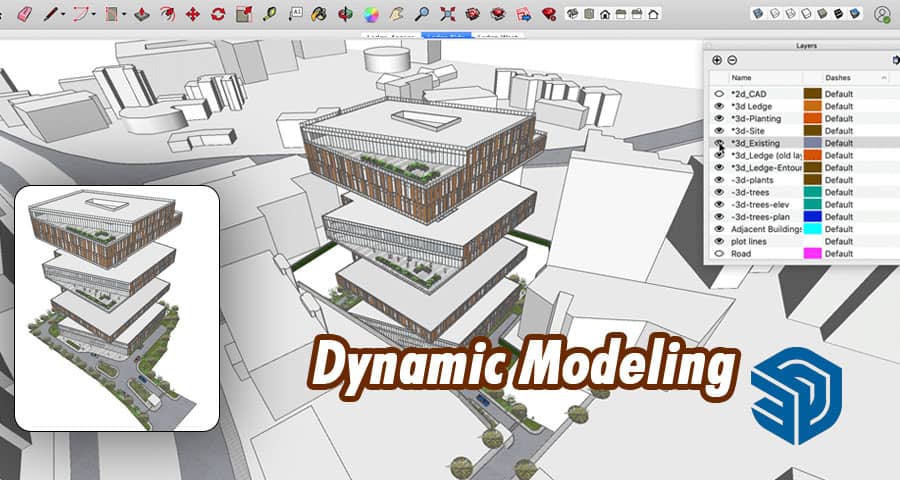In the realm of 3D modeling, SketchUp stands out as a versatile and powerful tool. Its intuitive interface and robust features have made it a favorite among architects, designers, engineers, and hobbyists alike. One of the key features that sets SketchUp apart is its dynamic modeling capabilities.
Understanding Dynamic Modeling
Dynamic modeling in SketchUp refers to the ability to create parametric designs that can be easily modified and adapted. Instead of creating static models, dynamic modeling allows users to define parameters and relationships between components, enabling them to make changes on the fly.
The Benefits of Dynamic Modeling
Dynamic modeling offers a myriad of benefits for users:
- Flexibility: With dynamic models, users can quickly iterate on designs and explore different variations without starting from scratch.
- Efficiency: By defining parameters and constraints, users can automate repetitive tasks and streamline their workflow.
- Customization: Dynamic models can be tailored to specific requirements, allowing users to create bespoke designs that meet their exact needs.
- Exploration: Dynamic modeling encourages experimentation and exploration, empowering users to push the boundaries of their creativity.
Techniques for Dynamic Modeling in SketchUp
- Component-Based Design: In SketchUp, components are reusable objects that can be easily manipulated and replicated. By organizing your model into components, you can create a modular design that can be modified and adapted with ease. Utilize the “Make Component” feature to define components within your model, and leverage the “Component Options” dialog to set parameters and attributes.
- Dynamic Components: Dynamic components take component-based design to the next level by adding interactivity and intelligence to your models. By adding dynamic attributes and formulas, you can create components that respond to user input and adjust their properties accordingly. Explore the vast library of dynamic components available online, or create your own using SketchUp’s built-in tools.
- Constraints and Relationships: Constraints and relationships allow you to define how components interact with each other within your model. Use constraints such as length, angle, and alignment to enforce geometric relationships, ensuring that your design remains cohesive and accurate. Leverage the “Inference Locking” feature to temporarily constrain movement along a specific axis or plane.
- Parametric Modeling: Parametric modeling involves defining mathematical equations and formulas to drive the geometry of your model. By linking parameters to variables, you can create a parametrically driven design that can be easily adjusted by tweaking the input values. Experiment with the “Dynamic Components” feature to create parametric models that respond dynamically to user input.
For more information, Please watch the following video tutorial
Conclusion
Dynamic modeling opens up a world of possibilities for SketchUp users, allowing them to create interactive, customizable, and adaptive designs with ease. By mastering the techniques outlined above, you can unlock the full potential of SketchUp and take your 3D modeling skills to new heights.


